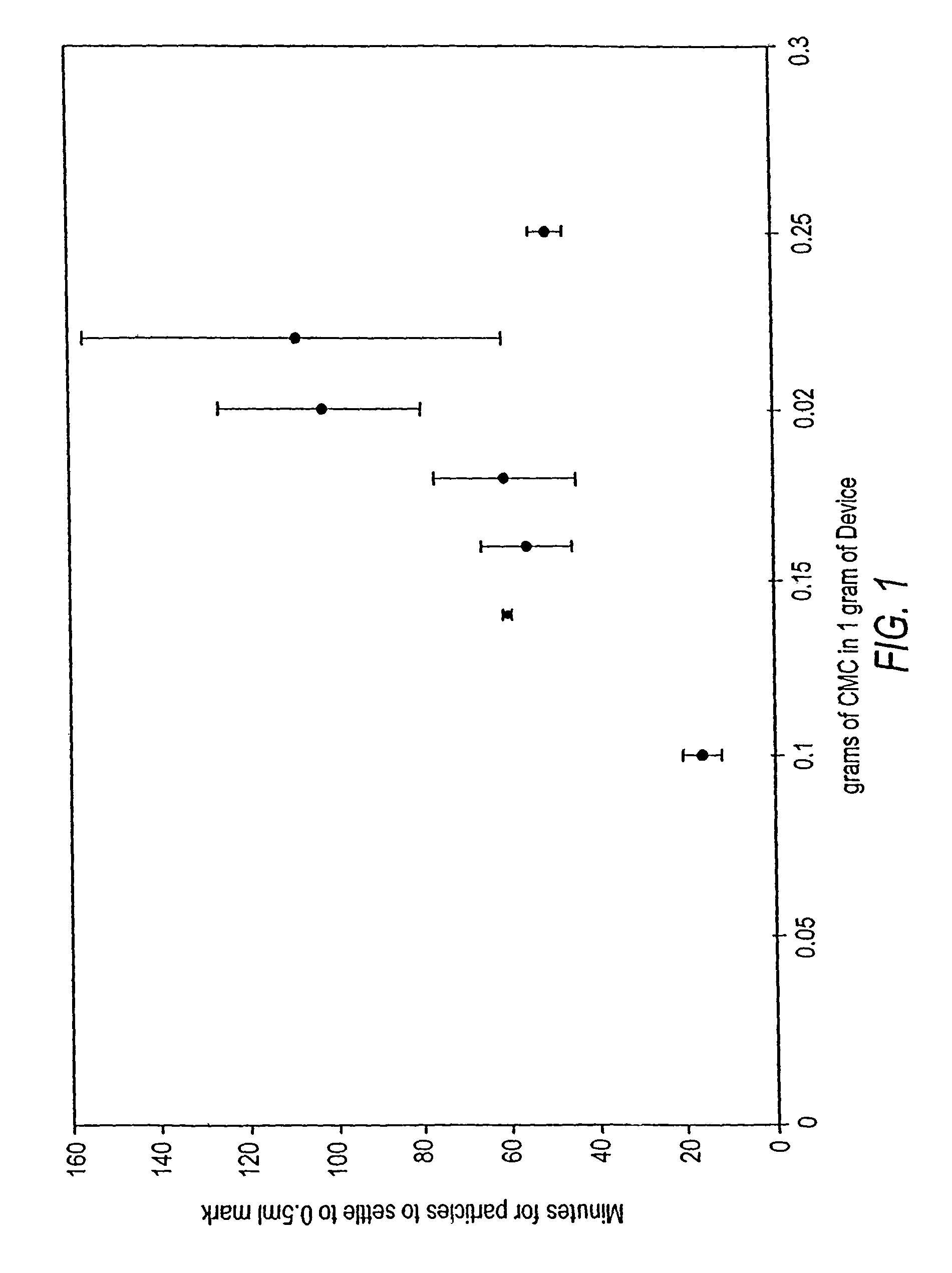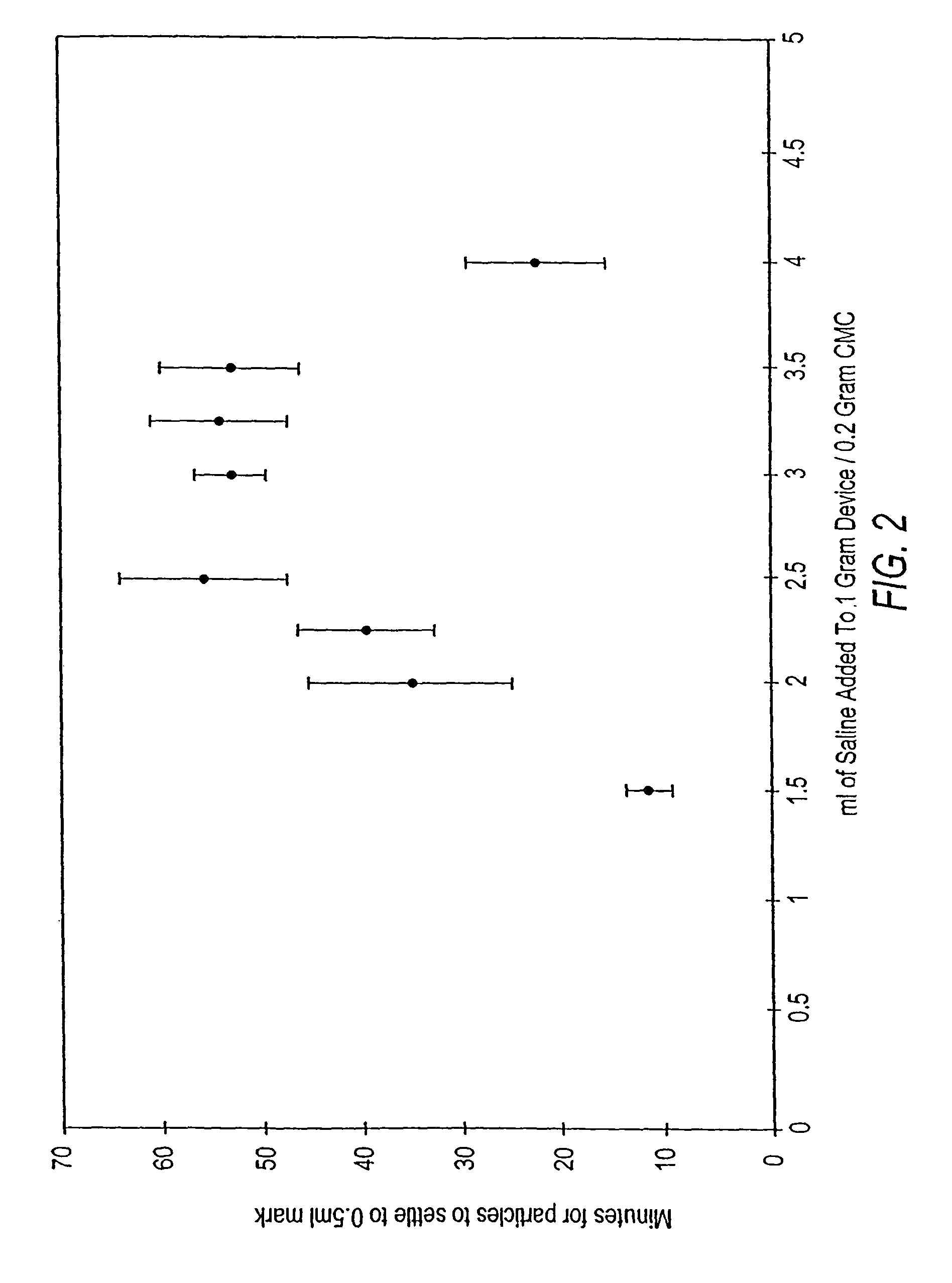Osteogenic devices and methods of use thereof for repair of endochondral bone, osteochondral and chondral defects
a technology of osteochondral and chondral bone, which is applied in the field of osteogenic protein-based materials and methods for repairing bone and cartilage defects, can solve problems that have been ignored or neglected, achieve the effects of restoring osteochondral or chondral defects, avoiding undesirable formation, and promoting and enhancing the rate and/or quality of new bone formation
- Summary
- Abstract
- Description
- Claims
- Application Information
AI Technical Summary
Benefits of technology
Problems solved by technology
Method used
Image
Examples
experiment 1
[0156]1. Unitary Device Configuration (dogs)
[0157]This study illustrates the efficacy of OP-1 combined with collagen matrix and carboxymethylcellulose for repairing critical-size ulna segmental defects in the art-recognized canine model.
[0158]Briefly, the data set forth below indicate at least comparable radiographic healing at sites that received a CMC / OP-1 device relative to segmental defects treated with the standard OP device. The final radiographic grade (maximum=6.0) for defects treated with CMC / OP-1 was 5.33±0.58 compared to 4.67±0.58 for defect receiving the standard OP-1 device. In general, new bone formation was evident as early as two weeks post-operative in all defects. The new bone continued to densify, consolidate and remodel until sacrifice at twelve post-operative weeks. The mean load to failure of the defects treated with the CMC / OP-1 device was 59.33 N±26.77. This was 70% of the mean load to failure of the contralateral sides which received the standard OP-1 impla...
experiment 2
[0246]2. Accelerated Repair of a Closed Fracture Defect as Treated with a Unitary Device (Dogs)
[0247]The following is a comparative experimental study of the efficacy of injectable, CMC-containing rhOP-1 formulations for accelerating fracture healing in dogs.
Test System
[0248]Adult male mongrel dogs bred for purpose were utilized in this study. Special attention was paid in selecting animals of uniform size and weight to limit the variability in bone geometry and loading. The animals were screened clinically and radiographically to exclude acute and chronic medical conditions during a two-week quarantine period.
[0249]Using standard aseptic techniques, surgery was performed under isofluorane gas anesthesia and was monitored by electrocardiogram and heart rate monitors. Pre-surgical medication was administered approximately 20-30 minutes prior to anesthesia induction. The pre-surgical medication consisted of atropine (dosage 0.02 mg / lb body weight) andacepromizine (dosage 0.1 mg / lb bo...
PUM
| Property | Measurement | Unit |
|---|---|---|
| viscosity | aaaaa | aaaaa |
| particle sizes | aaaaa | aaaaa |
| particle sizes | aaaaa | aaaaa |
Abstract
Description
Claims
Application Information
 Login to View More
Login to View More - R&D
- Intellectual Property
- Life Sciences
- Materials
- Tech Scout
- Unparalleled Data Quality
- Higher Quality Content
- 60% Fewer Hallucinations
Browse by: Latest US Patents, China's latest patents, Technical Efficacy Thesaurus, Application Domain, Technology Topic, Popular Technical Reports.
© 2025 PatSnap. All rights reserved.Legal|Privacy policy|Modern Slavery Act Transparency Statement|Sitemap|About US| Contact US: help@patsnap.com


